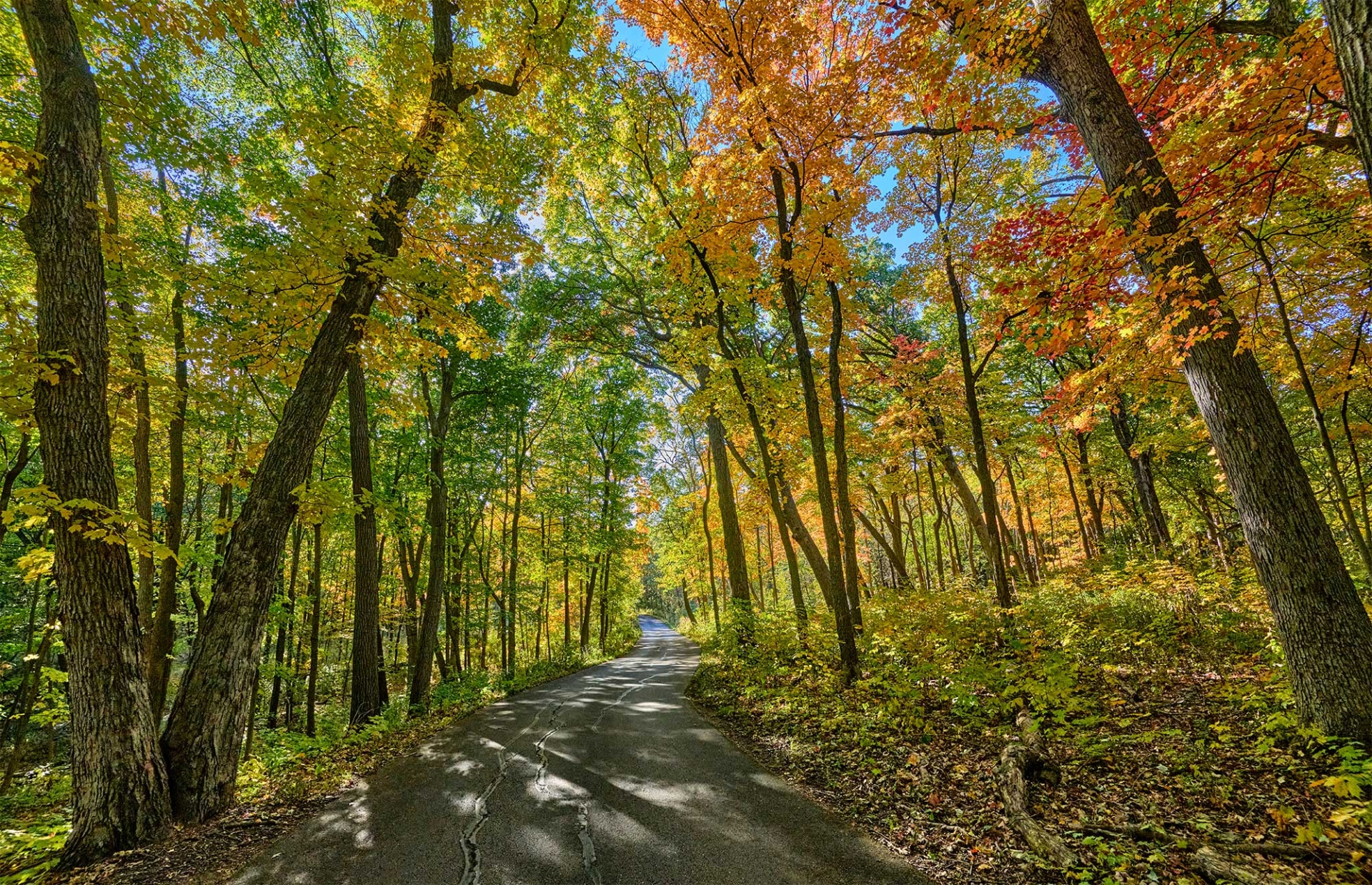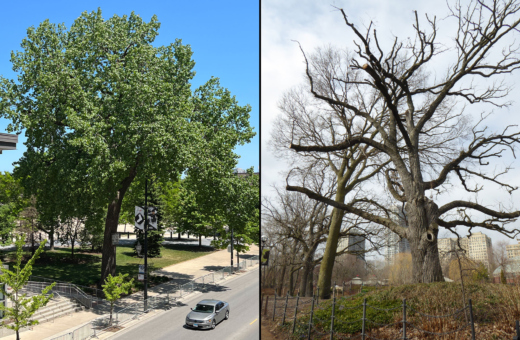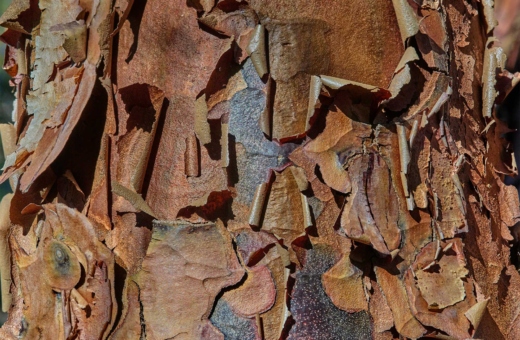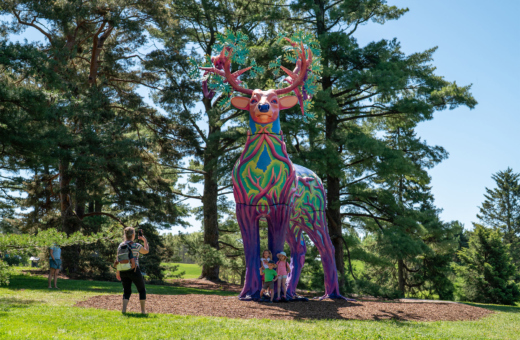Trees’ Timing Offers Clues to Climate Science
Every week, Frank Zibrat heads into the changing autumn woods at The Morton Arboretum. He is not there just to enjoy being surrounded by brilliant color and nature’s other beauties, but to seek out scientific data from 20 particular oak trees.
Have the acorns developed? Have they fallen yet? Have the leaves finished changing color? In late winter, he’ll be out there again, looking for the first signs that the oaks’ leaf and flower buds are swelling, preparing for their big opening in spring.
“It’s a complex cycle that a tree goes through,” Zibrat said. “When you really get to know a particular tree, you get down and see the micro picture of what it’s doing. You also start to notice the big picture of what is happening around the tree.”
Zibrat is among a team of more than 60 volunteers collecting data about the timing of trees’ annual cycles to help Arboretum scientists better understand how climate change is affecting nature, and to answer basic scientific questions about trees and their environment.
Phenology, the study of the timing of natural phenomena, is a key part of the efforts of scientists at the Arboretum and all over the world to understand climate change. That’s because what plants do and when they do it is influenced by their environment, including heat, cold, water, storms, and drought—all the factors that are changing in a warming world.
The hope of Christy Rollinson, the forest ecologist who leads the Arboretum’s phenology monitoring team, is that that this data, combined with clues from satellite observations, herbarium records, historical documents, fieldwork, and other sources, can eventually lead to useful advice about how to help trees and forests cope.
“The basic needs of trees are not going to change in the future, but the balance of different influences on them will,” Rollinson said. “We’re hoping we can figure out what trees need and where we are able to do something about it.”
Collecting phenology observations is meticulous work that needs to go on year after year, because only in the long term can trends become clear. Weather—the day-to-day jangle of rain and dry spells, storms and sun, cold and sudden thaws—is noise and static that obscures a clear signal about the overall climate.
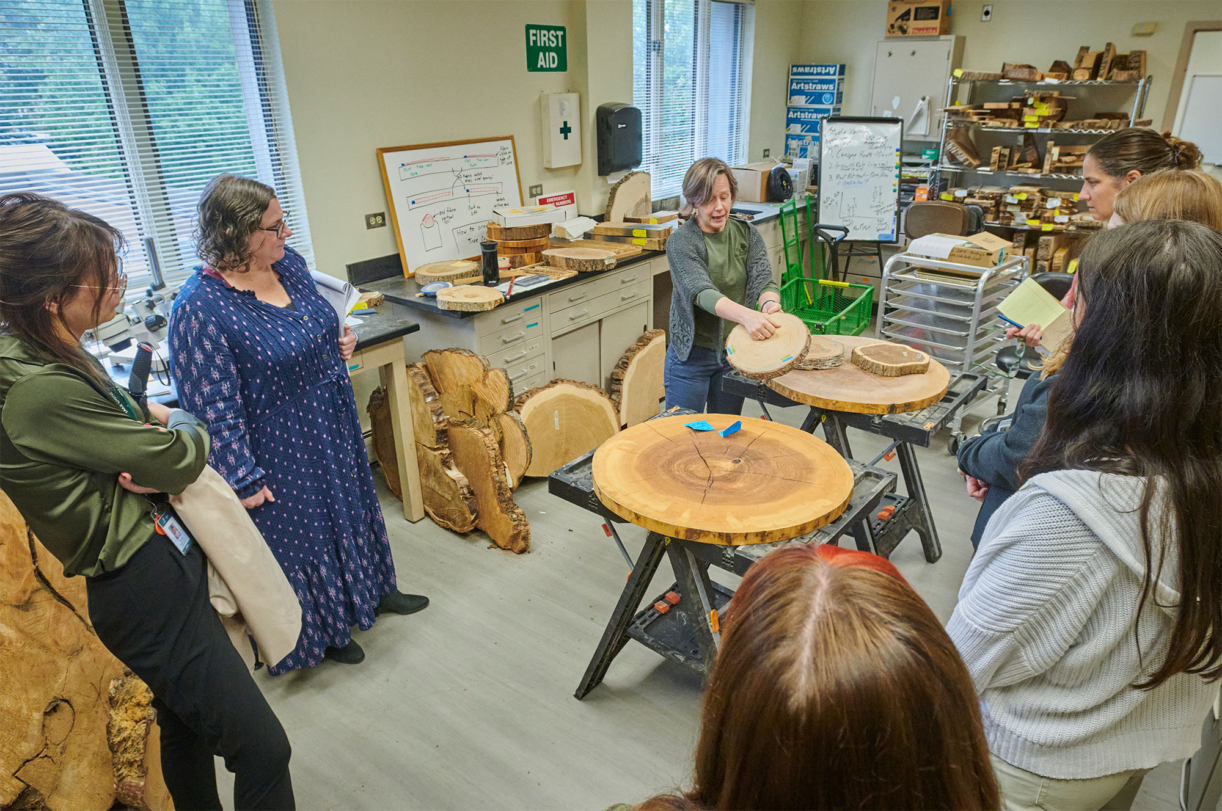
Forest ecologist Christine Rollinson explains to laboratory visitors how climate variations affect the growth of trees.
“Phenology is a slow-burning project, because the weather is always so variable,” Rollinson said. The phenology volunteers have been collecting data since 2018, but “it takes a decade or more of observations before we can confidently start to answer most climate questions,” she said.
The Arboretum, as a scientific institution, is especially well suited to collecting this kind of long-term data. For more than a century it has been building carefully curated collections of living trees from around the world, so that many different species can be compared in the same place in the same weather. They can be observed for many years in a place dedicated to the preservation of its tree collections.
Many volunteer citizen scientists around the United States contribute observations of fall leaf drop and spring bud burst to a cooperative effort, the USA National Phenology Network. The network compiles their observations—including from the Arboretum—to give an overall picture of the progression of fall and spring each year. “That database is a very useful tool, but it’s only an overall view and it’s based on just a few species,” Rollinson said.
The Arboretum is monitoring 600 trees from 200 different species of maples, elms, and oaks, providing much more fine-grained information that may be able to tease out differences in the responses of different species.
“We can look for really fine patterns,” Rollinson said. How does the phenology of a red maple and a sugar maple vary? Is one species more sensitive to drought or cold than the other? How much of that variation is due to their environment, including the long-term changes in climate, and how much to their genetic differences?
This kind of observation is rare. “We can do it because our tree collections are so large, and because of our volunteers,” Rollinson said. “Without them, we would not be able to leverage the strength of our collections.”
“We’re providing information to them so they can start to put the puzzle pieces together,” Zibrat said.
One thing is already clear from phenology monitoring; from historical records; and from decades of observations by the Arboretum’s manager of plant records, Ed Hedborn: Spring is coming to trees sooner. Trees are opening their leaf and flower buds two to three weeks earlier, on average, than when the Arboretum was founded in 1922.
It’s not just the Arboretum. “That is one of the most widespread and consistent signs,” Rollinson said, confirmed by observations of plants and animal behavior from many regions of the Earth. “It’s a clear ecological indicator of climate change.”
What’s not clear is the effect that an earlier start in spring might have on trees through the growing season or in autumn.
“Autumn is much more of a puzzle because the factors are so complex,” Rollinson said. There are still many questions about what triggers dormancy—trees’ wintertime sleep, for which they prepare by coloring and dropping their leaves. The coming of dormancy is affected by the weather and other influences all through the growing season.
Drought is a major factor, and it is projected that as the climate continues to change, trees will face more periods of dry soil and limited water. But the exact relationship between drought and the growth of trees, from their roots to their highest leaves, is one of the topics under study at the Arboretum.
The volunteers’ phenology monitoring is providing data to help tackle those questions.
Zibrat takes pride in contributing to that science, even as he enjoys the weekly experience of simply being out among the trees. As he scrutinizes his oaks for signs of change in fall, he said, “There’s a sadness to it. You see the leaves turn brown and start to fall, and the trees appear to have seen the best of their days. But you know that’s not the end. In a few months they will come back. And there’s an enormous hopefulness to that.”
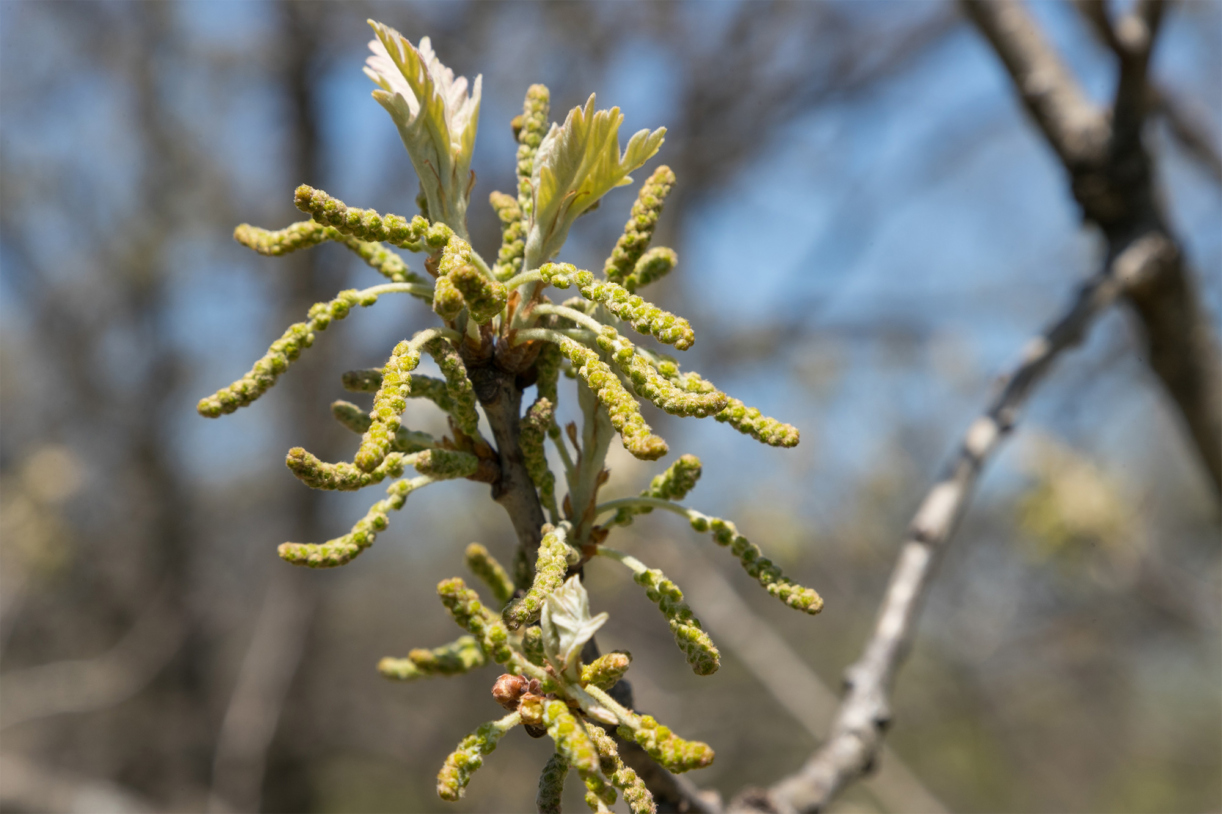
The opening of an oak’s leaves in spring and the emergence of its long, dangling flowers, called catkins, is a key event in its phenology.
There are no current openings for phenology monitoring volunteers, but the Arboretum’s volunteer program offers many other opportunities to be a tree champion. See mortonarb.org/volunteer.
